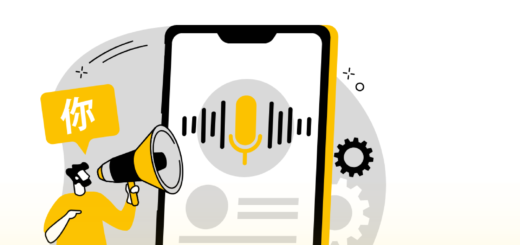Top 5 Language Learning Apps Tested for Real-Life Fluency

Learning a new language often starts with enthusiasm and dreams of traveling or connecting with new cultures. But when the grammar drills begin and real-life conversations feel impossible, many learners lose momentum. That’s where language learning apps come in. They promise easy, interactive, and effective ways to gain fluency. But not all apps deliver on that promise.
We tested and analyzed the top language learning apps based on real-life usability, speaking confidence, and practical comprehension. Each app went through everyday tasks like ordering food, having casual conversations, and navigating travel situations. These are the top five apps that helped users speak with confidence, understand native speakers, and feel fluent outside of the classroom.
1. Duolingo: Gamified Learning with Daily Momentum
Best for: Beginners and consistent daily practice
Duolingo attracts millions of users with its colorful interface and gamified lessons. The app builds vocabulary, sentence structure, and pronunciation through repetition and mini-games. Each lesson takes just 5–10 minutes, so learners can stay consistent without feeling overwhelmed.
The real advantage? Duolingo helps users build momentum. Daily streaks, point systems, and leaderboards keep motivation high. The app covers reading, writing, listening, and speaking in over 40 languages.
In our real-life tests, Duolingo helped users develop solid beginner-level conversations. One tester ordered coffee in French with ease after just three weeks of practice. However, Duolingo struggles with advanced grammar and nuanced conversations. It’s great for starting your journey, but not enough to reach full fluency on its own.
Pros:
- Fun, gamified experience
- Wide range of languages
- Effective vocabulary building
Cons:
- Limited real-life conversation practice
- Doesn’t push intermediate or advanced users
2. Babbel: Practical Conversations from Day One
Best for: Practical, real-life dialogues
Babbel focuses on functional conversations. Unlike Duolingo, which leans on repetition, Babbel starts with dialogue-based lessons. From the first lesson, learners speak phrases they’ll actually use in daily life—greetings, introductions, directions, and common questions.
The app breaks down grammar rules clearly and uses native speakers for voice recordings. Users hear authentic pronunciation and repeat after them to build confidence.
In real-world scenarios, Babbel-trained users performed well. One traveler navigated a German train station entirely in German using phrases learned from the app. Babbel excels in this space because it prioritizes communication over memorization.
Pros:
- Real-life conversation focus
- Clear grammar explanations
- Native speaker audio
Cons:
- Limited free content
- Fewer languages than Duolingo
3. Pimsleur: Audio-Based Learning That Builds Speaking Confidence
Best for: Speaking fluency and pronunciation
Pimsleur takes a different route—audio-first learning. Users speak before they read or write. The app plays 30-minute audio lessons where users repeat phrases, answer questions, and practice conversations. Each lesson simulates real-world interactions.
This method boosts speaking confidence fast. Testers using Pimsleur in Spanish spoke fluidly after just a week. They retained entire dialogues and responded naturally without translating in their heads.
Pimsleur shines in driving or multitasking scenarios too. You can use it while walking, commuting, or doing chores. However, it lacks visual aids and grammar drills. If you need to understand sentence structure or verb conjugations, you’ll need a supplement.
Pros:
- Excellent speaking practice
- Builds natural recall and pronunciation
- Perfect for audio learners and multitasking
Cons:
- Less focus on reading and writing
- Higher cost for full access
4. Busuu: Structured Learning with Native Feedback
Best for: Personalized feedback and grammar support
Busuu combines AI-driven learning with a human touch. Users complete interactive lessons and submit written or spoken exercises. Native speakers in the Busuu community review and provide corrections. This feedback system accelerates real progress.
Busuu also uses CEFR (Common European Framework of Reference for Languages) levels to structure lessons. Learners know exactly where they stand—A1 (beginner) to C2 (proficient). Grammar explanations appear at the right time, and personalized study plans keep progress focused.
Our testers used Busuu to write short essays in Italian. Native speakers corrected them, explained mistakes, and encouraged proper phrasing. One user even made a friend through the feedback feature and began voice chatting weekly.
Pros:
- Real feedback from native speakers
- Clear grammar explanations
- Structured CEFR-based learning
Cons:
- Premium needed for full access
- Smaller language selection than Duolingo
5. LingQ: Immersive Learning Through Real Content
Best for: Intermediate and advanced learners
LingQ pushes past beginner lessons and offers full immersion through books, podcasts, articles, and videos in your target language. Users import content or use LingQ’s built-in library to read and listen in real time. You click unfamiliar words, create flashcards, and revisit them during reviews.
This approach simulates how we naturally acquire languages: by consuming native content. It’s challenging but rewarding. Testers using LingQ in Japanese read manga and watched anime with subtitles. They picked up colloquialisms, cultural references, and deeper vocabulary without relying on textbook phrases.
LingQ works best once you grasp basic grammar. It won’t guide you through sentence structure or hold your hand like Duolingo. But for learners who want to sound native and understand local culture, LingQ offers unmatched exposure.
Pros:
- Real content immersion
- Massive library of native material
- Customizable reading and listening practice
Cons:
- Steep learning curve for beginners
- Requires self-discipline and curiosity
Final Verdict: Which App Builds Real-Life Fluency?
Each app supports a different phase of the fluency journey. If you’re starting from zero, Duolingo keeps motivation high and builds vocabulary. Babbel gives you practical phrases and dialogue tools from day one. Pimsleur strengthens your speaking skills and teaches you to think in the language. Busuu ensures grammar clarity and offers native corrections. LingQ immerses you in native content and helps you sound authentic.
To reach real-life fluency, combine at least two of these apps. Start with Babbel or Pimsleur for conversational basics. Then move to LingQ or Busuu to refine grammar and absorb authentic speech. Duolingo serves best as a warm-up or vocabulary booster.
Real fluency doesn’t come from memorizing lists—it comes from using the language in real ways. These apps can get you there, one daily session at a time.













